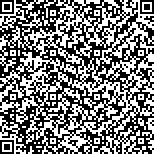| 引用本文: |
石琳,何羽,李子楠,杨威.姿势控制训练联合肌内效贴在中老年非特异性下背痛康复中的作用[J].湖南中医药大学学报,2021,41(11):1797-1801[点击复制] |
|
| |
|
|
| 本文已被:浏览 3228次 下载 1663次 |
| 姿势控制训练联合肌内效贴在中老年非特异性下背痛康复中的作用 |
| 石琳,何羽,李子楠,杨威 |
| (哈尔滨医科大学附属第一医院骨科, 黑龙江 哈尔滨 150001) |
| 摘要: |
| 目的 探讨姿势控制训练联合肌内效贴在非特异性下背痛(NLBP)患者疼痛、腰椎功能、生活质量、平衡能力、负性情绪改善中的作用。方法 前瞻性纳入2018年1月至2020年6月哈尔滨医科大学附属第一医院诊治的慢性NLBP患者178例,采用随机数字表法分为研究组、对照组,各89例。对照组给予肌内效贴(每布贴24~36 h,每周3贴,连续贴8周);研究组在对照组基础上进行姿势控制训练(每次30 min,1~2次/d,5 d/周,连续8周)。分别于治疗前及治疗后,采用视觉模拟评分(VAS)评定疼痛程度,采用Oswestry功能障碍指数(ODI)评定腰椎功能,采用Berg平衡量表(BBS)评定平衡能力,采用SF-36生活质量评价量表(SF-36)评定生活质量,采用焦虑自评量表(SAS)、抑郁自评量表(SDS)评定焦虑、抑郁程度,并记录不良反应。结果 两组治疗前VAS、ODI、SAS、SDS评分比较,差异均无统计学意义(P>0.05)。两组治疗后,VAS、ODI、SAS、SDS评分均低于治疗前(P<0.05),SF-36评分均高于治疗前(P<0.05),且研究组变化较对照组显著(P<0.05)。研究组治疗后,BBS、SF-36评分均高于治疗前(P<0.05),且高于对照组(P<0.05);对照组治疗后,BBS、SF-36评分与治疗前比较,差异均无统计学意义(P>0.05)。研究组不良反应发生率(10.11%)与对照组(11.24%)比较,差异无统计学意义(P>0.05)。结论 姿势控制联合肌内效贴能减轻NLBP患者疼痛,改善平衡能力,提高生活质量,缓解不良情绪,值得临床推广应用。 |
| 关键词: 非特异性下背痛 姿势控制训练 肌内效贴 疼痛 |
| DOI:10.3969/j.issn.1674-070X.2021.11.026 |
| 投稿时间:2021-05-03 |
| 基金项目:黑龙江省自然科学基金项目(D00-28)。 |
|
| The Role of Posture Control Training Combined with Kinesio Taping in the Rehabilitation of Non-specific Low Back Pain in Middle-aged and Elderly People |
| SHI Lin,HE Yu,LI Zinan,YANG Wei |
| (Department of Orthopedics, The First Affiliated Hospital of Harbin Medical University, Harbin, Heilongjiang 150001, China) |
| Abstract: |
| Objective To explore the role of posture control training combined with Kinesio Taping in the improvement of pain, lumbar spine function, quality of life, balance ability, and negative emotions in patients with nonspecific low back pain (NLBP). Methods 178 patients with chronic NLBP diagnosed and treated in The First Affiliated Hospital of Harbin Medical University from January 2018 to June 2020 were prospectively enrolled. They were divided into study group and control group by random number table, with 89 cases in each group. The control group was given Kinesio Taping (24~36 hours per cloth, 3 patches per week, continuous patches for 8 weeks). The study group performed posture control training on the basis of the control group (30 minutes each time, 1 to 2 times/day, 5 days/week, for 8 consecutive weeks). Before and after treatment, the visual analogue scale (VAS) was used to assess the degree of pain, the Oswestry disability index (ODI) was used to assess the lumbar spine function, and the Berg balance scale (BBS) was used to assess balance ability, 36-item short form (SF-36) was used to assess quality of life, self-rating anxiety scale (SAS) and self-rating depression scale (SDS) were used to assess the degree of anxiety and depression. And adverse reactions was recorded. Results There was no significant difference in the scores of VAS, ODI, BBS, SF-36, SAS, SDS between the two groups before treatment (P>0.05). The scores of VAS, ODI, SAS and SDS in the two groups were lower than before treatment (P<0.05), SF-36 was higher than before treatment (P<0.05), and the changes in the study group were more significant than those in the control group (P<0.05). The BBS and SF-36 of the study group was higher than before treatment (P<0.05), and higher than that of the control group (P<0.05). After treatment, there was no significant difference of the BBS and SF-36 in the control group compared with before treatment (P>0.05). There was no significant difference in the incidence of adverse reactions between the study group (10.11%) and the control group (11.24%) (P>0.05). Conclusion Posture control training combined with Kinesio Taping can relieve pain in patients with NLBP, improve balance, improve quality of life, and relieve bad emotions, which is worthy of clinical application. |
| Key words: non-specific lower back pain posture control training Kinesio Taping pain |
|

二维码(扫一下试试看!) |
|
|
|
|




